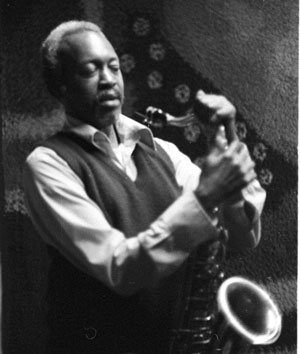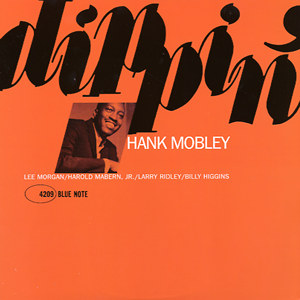Dip – Hank Mobley
Almost a blues with a bridge, this catchy song is a classic example of that funky even-8ths groove heard on many mid-‘60s Blue Note recordings. This one could work in a Latin setting as well.
- Recording: Hank Mobley - Dippin'
- Recorded on: June 18, 1965
- Label: Blue Note (BLP 4209)
- Concert Key: A-flat minor
- Vocal Range: , to
- Style: Even 8ths (funky)
- Trumpet - Lee Morgan
- Tenor Sax - Hank Mobley
- Piano - Harold Mabern
- Bass - Larry Ridley
- Drums - Billy Higgins
Video
- Description
- Historical Notes
- Solos
- Piano Corner
- Bass Corner
- Drum Corner
- Guitar Corner
- Inside & Beyond
- Minus You
Hip and catchy, The Dip is a later Hank Mobley classic. It’s built on that iconic funky even-8ths groove that characterizes so many songs from ‘60s Blue Note albums. The lead sheets show all important rhythm section figures from the recording; both the piano and bass rhythms are included, to really show how they “bounce” off each other. However, we feel this song can work just as well with a Latin groove instead. The specific articulations in the melody are important to the original funky style, but could be modified a bit in a Latin setting.
This song is almost a blues with a bridge, but the A section starts on the IV chord; in fact the first two four-measure phrases are the same. The bridge is 10 measures long, with the last four measures going to F minor with a simple rhythm section figure based on that of the “turnaround” in the A section. There is a rhythm section vamp intro, unrelated to the head, that is also used as a coda. Our lead sheets show the piano melody of this vamp; most of it is doubled by the bass, and this intro bass line is written in the C bass clef lead sheet.
A Condensed Score and second parts are available showing the recorded 2-horn arrangement. The longer notes of the A section melody are harmonized in 6ths and 4ths, while the bridge is in octaves.
This song is almost a blues with a bridge, but the A section starts on the IV chord; in fact the first two four-measure phrases are the same. The bridge is 10 measures long, with the last four measures going to F minor with a simple rhythm section figure based on that of the “turnaround” in the A section. There is a rhythm section vamp intro, unrelated to the head, that is also used as a coda. Our lead sheets show the piano melody of this vamp; most of it is doubled by the bass, and this intro bass line is written in the C bass clef lead sheet.
A Condensed Score and second parts are available showing the recorded 2-horn arrangement. The longer notes of the A section melody are harmonized in 6ths and 4ths, while the bridge is in octaves.
"Dippin'“ was Hank Mobley’s only recording with pianist Harold Mabern. All the players on this album recorded a lot for Blue Note in 1965. Mobley’s next recording after this session was on Lee Morgan’s “Cornbread” in September, featuring a very similar lineup but with Herbie Hancock replacing Mabern on piano and Jackie McLean added on alto sax.
For more Mobley songs with a similar funky groove, check out The Turnaround, Give Me That Feelin’, The Hippity Hop, High Voltage, and The Flip; even more are coming soon to jazzleadsheets.com.
For more Mobley songs with a similar funky groove, check out The Turnaround, Give Me That Feelin’, The Hippity Hop, High Voltage, and The Flip; even more are coming soon to jazzleadsheets.com.
Related Songs
Email Send Dip to a friend
Send this page to a friend via email. Add your name or email in the first field. In the second, add one or more email addresses, separated by a comma.

Hank Mobley
July 7, 1930 – May 30, 1986
Hank Mobley is one of the most acclaimed tenor saxophonists in modern jazz history. He is recognized by musicians and critics alike as one of the most important and eloquent jazz instrumentalists of all time. He recorded well over 100 of his own original compositions and left an indelible mark on the post-bop jazz scene. Read more...
There was a problem.
...

